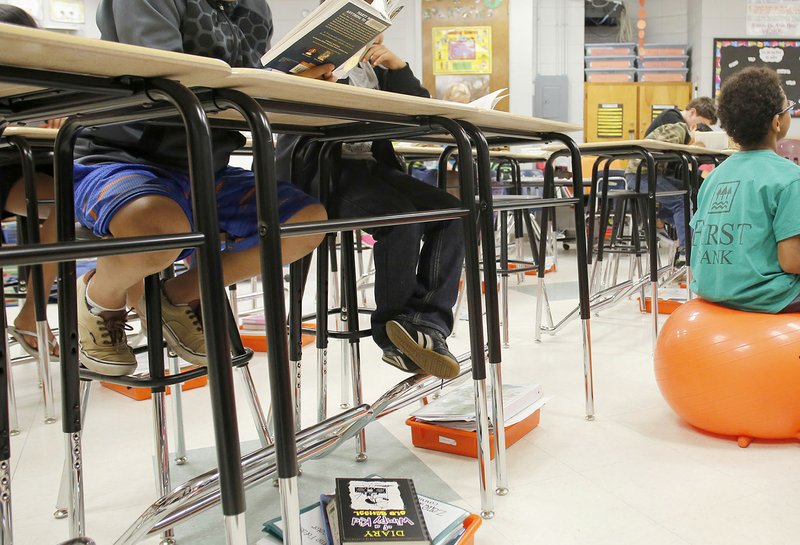The number of beginning teachers in Arkansas' public schools in the 2017-18 school year totaled 3,372, which was a 10-year high and an increase of 448 over just the previous year.
"We're making progress, folks," Arkansas Education Commissioner Johnny Key told the state Board of Education this week about the new teacher numbers. "A lot of times we stay focused on the negative, but that is huge."
Key attributed the increase to efforts by the state's Teachers of the Year, along with Department of Education staff and higher education institutions, to promote the teaching profession.
"This affirms my theory that in the next three to five years, the [requests for teacher licensure] waivers that schools bring to us aren't going to be needed because we are going to start filling these gaps," he said.
Approximately 100 of Arkansas' 238 traditional school districts have asked the state Education Board in recent years for the same kinds of waivers of rules and laws that were waived earlier for charter schools. Many of those granted waivers to traditional and charter schools center on exemptions to state teacher licensure laws.
Key and Frank Servedio of the Education Department's teacher effectiveness unit presented the beginning teacher numbers at a state Board of Education meeting in which the Education Board identified the subject areas in which there are critical shortages of teachers for the coming 2018-19 school year.
Those are art, chemistry, computer science, English/language arts, family and consumer science, French, journalism, library media, mathematics, middle childhood, music, physics, social studies and Spanish.
Servedio told the Education Board that while there are more subjects in which there is a greater dearth of licensed teachers to hire in 2018-19 than in earlier years, the gaps in the numbers of teachers needed and the numbers actually available are narrowing.
According to state law, teachers working in fields in which there are shortages can be entitled to financial incentives.
The number of beginning teachers is just one of several pieces of information included in the annual Educator Provider Quality Report.
The document, for example, also reports on retention of teachers over a number of years, on the numbers of people who complete traditional teacher preparation programs at state colleges and universities, and the numbers who get their teacher credentials in non-traditional teacher education programs.
Data on the numbers and percentages of teacher candidates who earn passing scores on the state-required teacher exams -- the Praxis exams -- are also in the state report, listed by colleges and universities.
In 2008-09, there were 1,966 beginning teachers, 1,791 of whom continued to teach after their first year and 1,420 who were still teaching five years later -- 72.2 percent.
In 2014-15, there were 3,111 beginning teachers, 76.6 percent of whom were still teaching after three years. There were 2,887 beginning teachers in 2015-16 and 2,924 in 2016-17.
As for traditional and alternative in-state teacher preparation programs, the number of enrollees has declined.
There were 2,296 enrolled in traditional teacher programs and 1,363 enrolled in non-traditional programs in 2016-17. That compared with 2,324 in traditional programs in 2015-16 and 1,413 in non-traditional teaching preparation programs.
Metro on 06/16/2018
